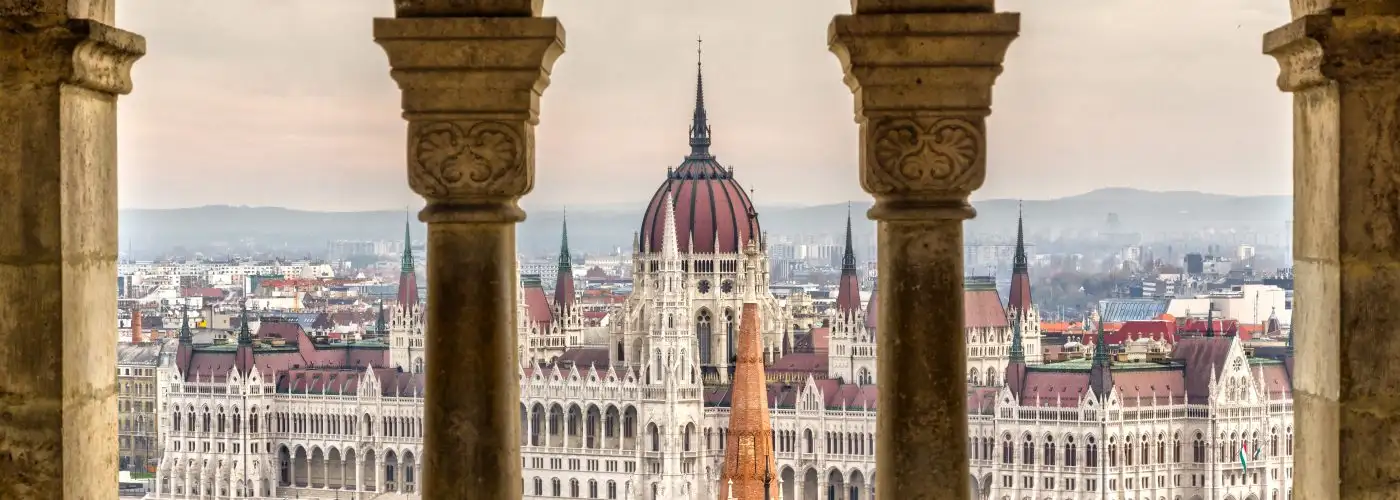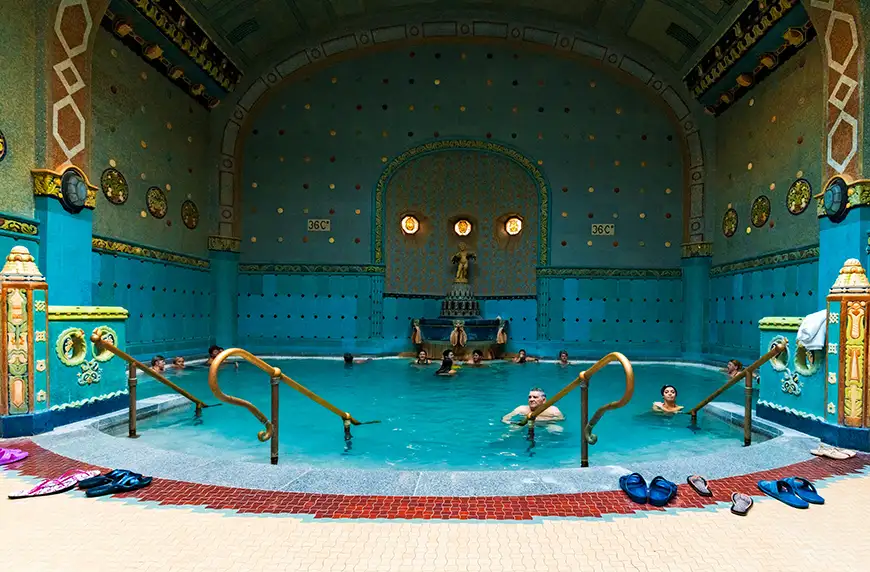If the words “summer in Europe” make you think of sky-high hotel prices and hordes of sunburned tourists, it’s time to broaden your horizons. Some truly bucket-list-worthy spots that are best visited in warm weather—from soaring Gothic castles to sunny vineyards—can also be part of a squarely affordable European getaway if you head east … but not too far.
While it’s no secret that Eastern Europe is more affordable than Western European hubs like Paris, you might be surprised by the value you can get in Central Europe. Budapest, Vienna, and Prague have as much appeal as over-visited Paris, Rome, and Barcelona—and a lot more value.
Affordable Europe in Summer: Hungary, Austria, the Czech Republic
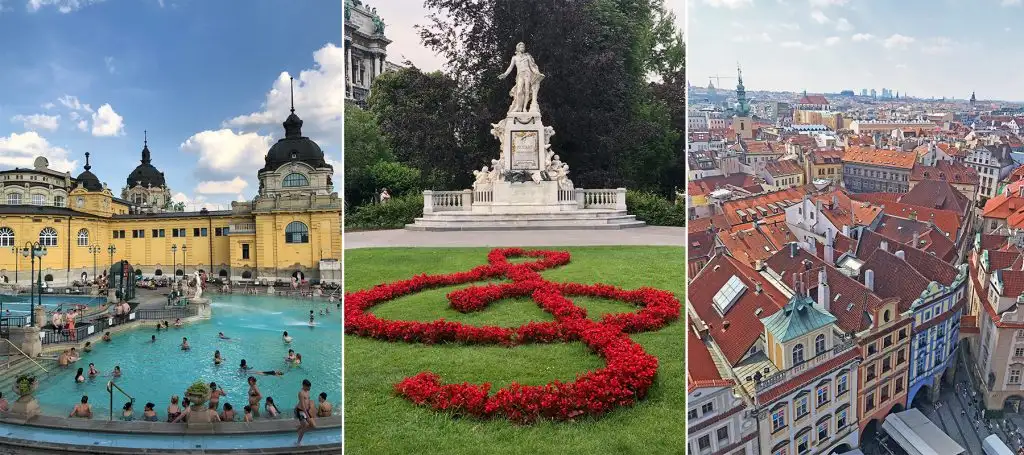
Consider favorable Czech and Hungarian exchange rates (they don’t use the Euro), shockingly cheap hotel options, and easy train routes through the region with newly revamped Eurail’s cheaper-than-ever Global Passes for multi-country travel. For the younger crowd, there are under-30 discounts aplenty thanks to the fact that this region actually welcomes tourists: Showing your Eurail pass (which is discounted 23 percent for those under 27, and 10 percent for seniors) gets twentysomethings and seniors discounts at establishments all over Europe.
Under-31 tour discounts are also available from tour provider STA Travel on all itineraries. Trips covering Budapest, Prague, and Vienna include its 14-day Best of Eastern Europe itinerary, and choosing a tour means someone will book all the affordable hotels and transit for you. If you’re not convinced that you can leave the bargain hunting to someone else, STA Travel has a price-beat guarantee or you’ll get $1,000 back.
Traveling by train is also the easiest way to see these three cities. Kicking back on a scenic trip through the Austro-Hungarian countryside means both avoiding a cramped airplane and arriving right in the city center, as opposed to at a far-off airport.
Here’s how the affordability of Central/Eastern Europe, the ease of train travel, and the most underrated cities in the region come together to make summer in Europe a worthwhile endeavor.
Budapest, Hungary: An Overlooked Cultural Unicorn
Perhaps the single most underrated place in Europe, Budapest, is two cities in one: hilly, historic Buda and flat, hard-partying Pest—divided by the Danube River. Summer is shoulder season in Budapest because it’s surprisingly hot and humid, especially by European standards. But if you’re open to 90-degree weather daily, Budapest in summer has as much revelry and history as it does savings. Its currency, the Hungarian forint, makes for a favorable exchange rate for Americans and surprisingly cheap meals, beer and wine (try the renowned local rosé), activities, and transportation.
By day, river cruises, beer gardens, and Art Nouveau architecture mean you’ll spend hours outdoors exploring on foot and via Budapest’s public transit system, which includes quaint yellow street cars and modern riverside trams. Start with cheap local craft beers and hip outdoor food vendors like the ones around Kishusom’s artisanal hot dog shop in central Pest.
Take a free Budapest history or architecture walking tour from nearby Vorosmarty Square that’ll take you across the river and up to Buda Castle’s ornate Fisherman’s Bastion for a bird’s eye view of Hungary’s breathtaking Gothic-revival parliament building (pictured at top) across the Danube. For a hidden gem smack in the middle of the river, Margaret Island is a pedestrian-only park about a 15-minute walk downriver, with public events, food vendors, and large-format water fountains to cool off at. While Buda and Pest are 1,000 and 800 years old, respectively, most of the city has been rebuilt (in Budapest’s original decorative styles) since the 1800s because of Communist occupations—which gives its historic-looking landmarks a unique shine.
By night, Pest is one big party for all ages. Don’t leave Budapest without visiting one of the city’s many historic ruin bars, like Mika Tivadar Mulato or world-famous Szimpla, to dance the night away in a repurposed abandoned building. Hit a spa party at one of the can’t-miss historic thermal pools; the Schzenyi Baths are the most popular, and less packed during warm months (the natural spring water is 98 degrees Fahrenheit, after all). If you’d rather see the historic yellow-painted facilities by day, know that they’re open year-round and also feature many bubbling indoor pools—including a beer spa for tub soaking with included stein service.
Where to stay: If you’d rather avoid Pest’s raucous party crowds by night, the Anna Hotel in Buda is public-transit accessible and has spacious rooms from $70 per night. Pest’s central Hilton Budapest is a five-star hotel in a centuries-old church with rates from $100 per night. Straddling both sides of the city on the Buda bank of the Danube, the historic Hotel Gellert has its own outdoor thermal wave pool, indoor baths (pictured), and rooms from just $60 per night.
Vienna, Austria: Extreme Value in Paris-Like Luxury
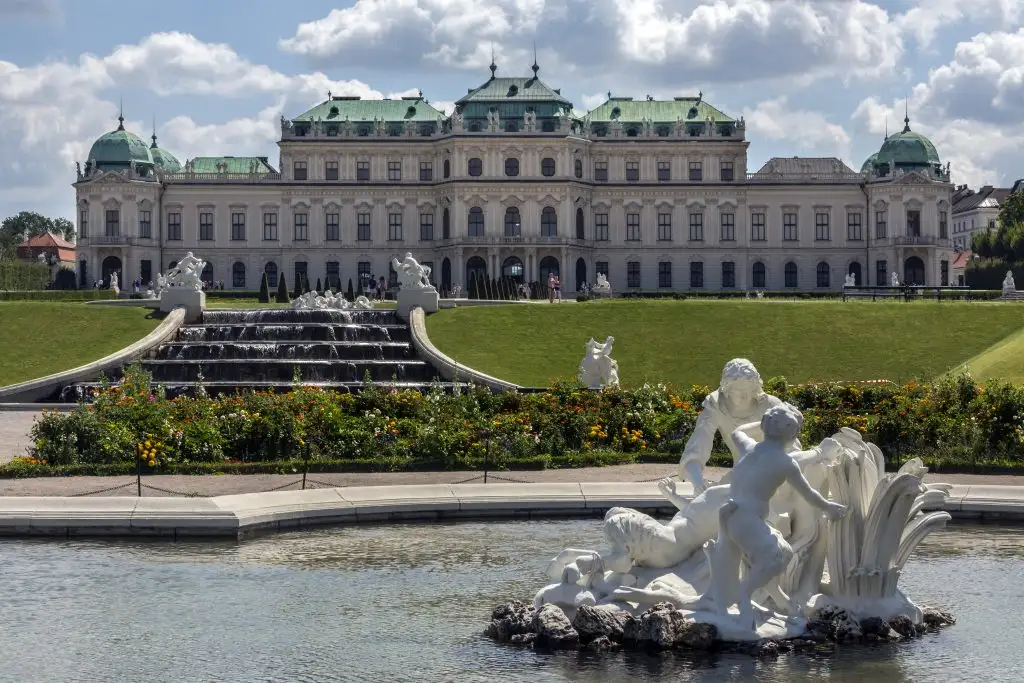
Like a mini Paris seen through the quirky lens of a Wes Anderson film (search #accidentalWesAnderson on Instagram for artsy shots of Vienna), Austria’s capital uses the Euro but offers cheap eats, free things to do, and uber-high-value luxuries. Opera house performances and black-tie galas are trademarks of this city as much as its Imperial Habsburg palaces and manicured classical gardens. And tickets to the latest ball are generally available to the public for less than you might think: the $80 to $100 ticket price typically goes to local arts institutions in the city that bred Beethoven and Mozart. Locals told me even ball gowns are easy and affordable to rent—leaving little excuse for you to not be Cinderella (or the prince) for a night.
Cheap eats include Bitzinger sausage stands, pubs slinging pilsner and schnitzel, and famous cafes with alluring pastry cases—just the sort of places where Sigmund Freud used to enjoy strong Viennese coffee. Café Central and Café Sperl are Vienna institutions, and coffeehouse culture in Vienna has been dubbed an Intangible Cultural Heritage by UNESCO. Wine is cheap and abundant, and wine countries Burgenland or the Wachau Valley aren’t far if you’re looking for a reason to get out to the rolling Austrian countryside for some gruner-veltliner whites. Wineries in neighborhoods very close the city, like Grinzing and Nussdorf, are also accessible via public transit.
Vienna is about 50 percent green spaces, making parks a must-see if you want to get to the best museums, restaurants, and monuments. The Museumsquartier is an expanse of parks and squares home to Vienna’s best art and natural history museums. Adjacent to the Vienna Operahouse, the Stadtpark attracts locals and visitors alike for its manicured gardens and brunch at high-end Meierei restaurant. Another high-end dining experience well worth the price is traditional Viennese tafelspitz, a delicious array of boiled beef cuts (typically serviced with fixings like apple sauce or potatoes, and soups) for about $60 per person at Plachutta Wollzeile.
Where to stay: Ruby Hotel has two hip properties with outdoor spaces and included smartphones for guest to use off-property; Ruby Marie Hotel from $80 per night is a short walk to the Museumquartier, and Ruby Sofie Hotel from $100 per night is closer to the city center.
Prague, Czech Republic: Art and Haunted History That Runs Deep
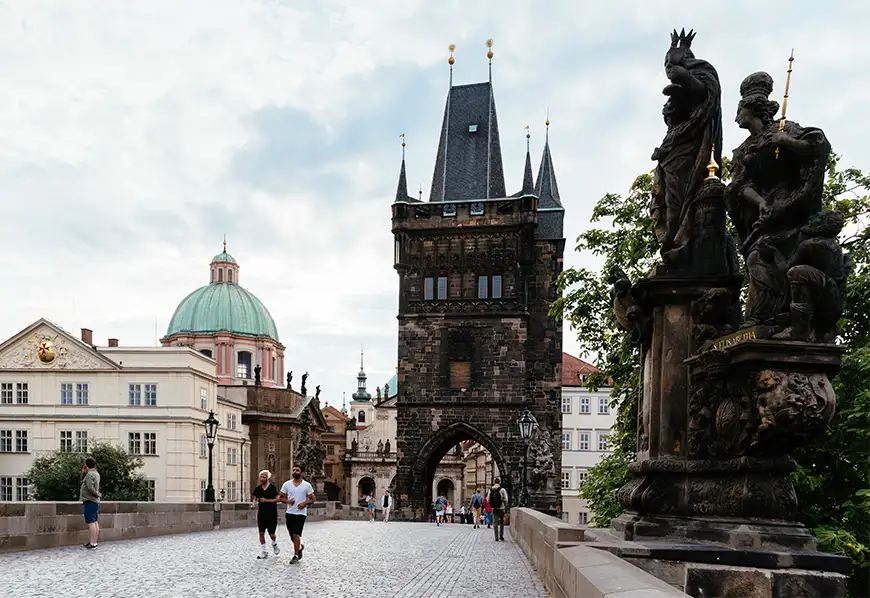
Like a cozier London with more public art, truly spooky ghost tours, and plenty of pilsner beer, Prague is a starkly underrated community of artists that’s also known for its well-preserved history. Heading to the top of Old Town Hall is a must to see why Prague is called the “City of a Thousand Spires,” and a $12 tour will also take you 25 feet underneath the town hall to see its 1,000-year-old dungeons and the former street level of the old city. Old Town Hall is also home to the world’s largest and oldest astronomical clock, which draws a perpetual crowd.
Nearby there’s plenty of public art to uncover, like the rotating sculpture Head of Franz Kafka and Frank Gehry’s Dancing House on the Vltava River. Walking across the pedestrian-only Charles Bridge (pictured) on a Prague ghost tour after dark will also reveal the 600-year-old arch bridge’s legends and superstitions of its eerie monuments and statues. Mala Strana, or the lower neighborhood below the Charles Bridge, is a favorite among visitors for cozy restaurants and street musicians. A trip to Prague Castle, a Baroque palace dating back to 870, should include nearby Strahov Monastery where you can taste monk-brewed beer (a tradition dating back to the 11th century) and check out the massive monastic library’s gilded ceilings.
The Czech Republic reports the highest consumption of beer per capita in the world and is the birthplace of pilsner beer, so it’s easy to find a packed beer garden or brewery with live music and public art to enjoy. Modern and award-winning restaurants like Eska are also shockingly affordable: around $40 per person including drinks—and reasonably priced yet totally Instagramable cafes like Mysak Café serve as the perfect way to refuel between sites.
Where to stay: The cozy Hotel Adler is central and quiet for just $70 per night.
More from SmarterTravel:
- 10 Emerging Places to Visit a Crowd-Free Europe
- The Best Places in Europe for Every Type of Traveler
- 14 Best Shoes to Wear in Europe
[viator_tour destination=”499″ type=”3-mod” tours=”5808SZECHENYI,35015P1,7353P8″]
SmarterTravel’s Shannon McMahon traveled to Prague, Vienna, and Budapest as a guest of Eurail and STA Travel. Follow her Europe travel adventures and more on Instagram @shanmcmahon.
We hand-pick everything we recommend and select items through testing and reviews. Some products are sent to us free of charge with no incentive to offer a favorable review. We offer our unbiased opinions and do not accept compensation to review products. All items are in stock and prices are accurate at the time of publication. If you buy something through our links, we may earn a commission.
Related
Top Fares From
Today's Top Travel Deals
Brought to you by ShermansTravel
France: 8-Night Paris, Avignon & Nice...
Infinity Worldwide Vacations
 vacation
$2880+
vacation
$2880+
Poconos: 3 Nts in Garden of...
ResortsAndLodges.com
 hotel
$305+
hotel
$305+
7-Nt Canada & New England Cruise,...
Princess Cruises
 cruise
$839+
cruise
$839+
